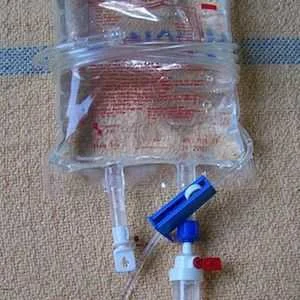The current vague recommendations on continued fluid therapy in sepsis result in differences in fluid therapy, according to a paper that reports on a post hoc analysis of the Scandinavian Starch for Severe Sepsis and Septic Shock (6S) trial database.
Peter Buhl Hjortrup from the Department of Intensive Care, Rigshospitalet, Copenhagen, Denmark with colleagues from Copenhagen Trial Unit and the Centre for Research in Intensive Care in Copenhagen analysed the trial database of patients, who were randomised to receive either hydroxyethyl starch 130/0.42 or Ringer’s acetate. They found associations between hospital characteristics adjusted for patient baseline characteristics and fluid resuscitation volumes given to ICU patients in the first 3 days of severe sepsis.
Writing in PLOS One, the researchers conclude that variations in clinical practice not explained by patient characteristics emphasise the need for RCTs assessing fluid resuscitation volumes fluid in patients with sepsis.
See Also:CHEST Trial - BMJ Stirs Controversy Over Data Release
The analysis included 654 patients who were in the ICU for 3 days and had fluid volumes available. The analysis showed significantly different volumes of fluid resuscitation and total fluid input after adjusting for baseline variables. The median fluid resuscitation volume was 7,300ml and the median fluid input was 16,912ml. The difference between fluid resuscitation volume and total fluid input was due to fluids given with medication and nutrition in 72% of the cases.
Increased fluid resuscitation volumes were found to be independently associated with increased lactate, higher cardiovascular and renal SOFA subscores, lower respiratory SOFA subscore and having surgery performed before randomisation. Weight and increased coagulation SOFA subscore were associated with increased fluid input. The researchers note that the association between combined SOFA score and fluid resuscitation volume may depend on the constitution of the SOFA subscores. Amongst the limitations discussed, the researchers note that the renal SOFA subscore should be interpreted with caution as extreme values (e.g. established anuria) might have led the clinicians to withhold further fluid resuscitation.
Image credit: Wikimedia Commons, By Hospital - Own work, CC BY-SA 3.0, https://commons.wikimedia.org/w/index.php?curid=8748160
Peter Buhl Hjortrup from the Department of Intensive Care, Rigshospitalet, Copenhagen, Denmark with colleagues from Copenhagen Trial Unit and the Centre for Research in Intensive Care in Copenhagen analysed the trial database of patients, who were randomised to receive either hydroxyethyl starch 130/0.42 or Ringer’s acetate. They found associations between hospital characteristics adjusted for patient baseline characteristics and fluid resuscitation volumes given to ICU patients in the first 3 days of severe sepsis.
Writing in PLOS One, the researchers conclude that variations in clinical practice not explained by patient characteristics emphasise the need for RCTs assessing fluid resuscitation volumes fluid in patients with sepsis.
See Also:CHEST Trial - BMJ Stirs Controversy Over Data Release
The analysis included 654 patients who were in the ICU for 3 days and had fluid volumes available. The analysis showed significantly different volumes of fluid resuscitation and total fluid input after adjusting for baseline variables. The median fluid resuscitation volume was 7,300ml and the median fluid input was 16,912ml. The difference between fluid resuscitation volume and total fluid input was due to fluids given with medication and nutrition in 72% of the cases.
Increased fluid resuscitation volumes were found to be independently associated with increased lactate, higher cardiovascular and renal SOFA subscores, lower respiratory SOFA subscore and having surgery performed before randomisation. Weight and increased coagulation SOFA subscore were associated with increased fluid input. The researchers note that the association between combined SOFA score and fluid resuscitation volume may depend on the constitution of the SOFA subscores. Amongst the limitations discussed, the researchers note that the renal SOFA subscore should be interpreted with caution as extreme values (e.g. established anuria) might have led the clinicians to withhold further fluid resuscitation.
Image credit: Wikimedia Commons, By Hospital - Own work, CC BY-SA 3.0, https://commons.wikimedia.org/w/index.php?curid=8748160
References:
Hjortrup PB, Haase N, Wetterslev J, Perner A (2016) Associations of hospital and patient characteristics with fluid resuscitation volumes inpatients with severe sepsis: post hoc analyses of data from amulticentre randomised clinical trial. PLoS One, 11(5):e0155767. doi:
10.1371/journal.pone.0155767. eCollection 2016.
Latest Articles
sepsis, fluids
The current vague recommendations on continued fluid therapy in sepsis result in differences in fluid therapy, according to a paper that reports on a post hoc analysis of the Scandinavian Starch for Severe Sepsis and Septic Shock (6S) trial database.










